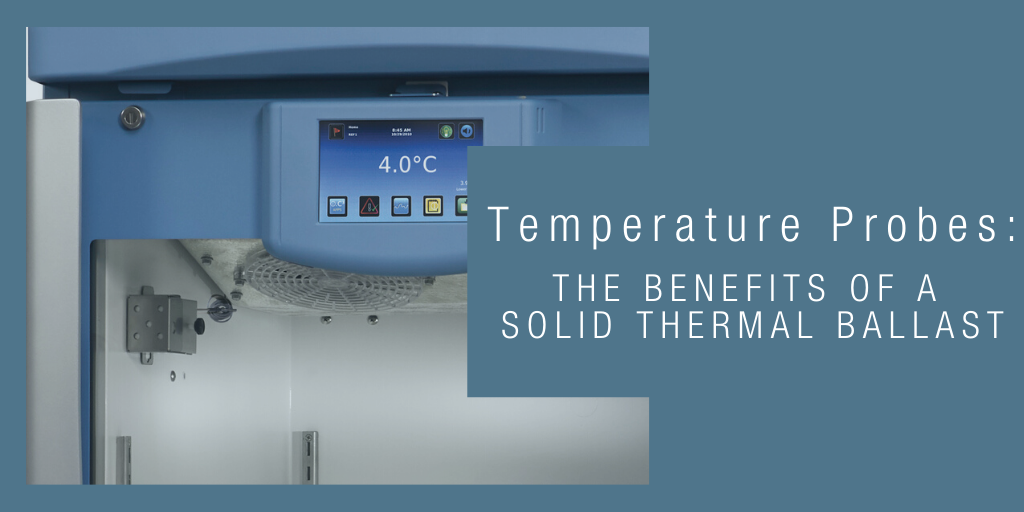
The Centers for Disease Control and Prevention (CDC) defines a buffered temperature probe as follows:
Temperature probes are designed to prevent false readings by protecting the thermometer from sudden changes in temperature that can occur when opening a refrigerator door. A probe is “buffered” by immersing it in a vial filled with liquid (e.g., glycol, ethanol, glycerin), loose media (e.g., sand, glass beads), or a solid block of material (e.g., Teflon®, aluminum).
Buffered Probe vs. Non-Buffered Probe
A buffered temperature probe is the most accurate way to measure product temperatures. Temperatures measured by a buffered probe match product temperatures more closely than those measured by standard thermometers, which tend to reflect only air temperature.
The use of appropriate thermal buffers can help avoid unnecessary nuisance alarms that could be generated if only air temperature were measured. Staff alarm fatigue is very common and using an appropriate thermal buffer is one way to avoid this.
Liquid Thermal Buffers
Traditional thermal buffers use high-viscosity liquids like glycerin or propylene glycol to simulate the thermal mass of stored products. While they do provide the intended thermal buffering benefits, they require setup and ongoing maintenance to ensure proper performance, as liquids can evaporate or leak over time and leave the probes unbuffered. Moreover, some environments, such as pharmacy clean rooms, want to avoid the use of liquids to prevent bacterial growth.
Solid Thermal Buffers
Solid ballasts are maintenance-free thermal buffering solutions designed to replace glycerin bottles. Solid ballasts are uniquely designed with mass and materials that allow it to match the temperature responsiveness of traditional liquid-based thermal buffers, without the hassle of ongoing maintenance
- Accurately simulates product with equivalent performance to glycol probe bottle
- Maintenance-free design eliminates filling/refilling bottles due to setup, evaporation, or leakage
- Allows for simple installation on the cabinet wall, with additional bracket options for on-shelf placement
- Prevents the possibility of bacterial growth & minimizes cleaning requirements
- Accommodates co-location of additional 3rd party and/or calibration probes
Other Blogs You Might Be Interested In...
- Medical-Grade Refrigeration in the Pharmacy: 2020 Trends & Adoption Rates
- Easier Maintenance for Refrigerators with Optional Solid Ballast
- Now Available – PDF Temperature Graphs and Event Reports
- Where to Properly Place a Temperature Probe in Your Vaccine Refrigerator
We have produced an equivalency study for an aluminum solid ballast vs. a glycerin buffered temperature probe. Results showed that the solid ballast provides equivalent temperature performance to glycerin probe bottles. You can download the study at the link below.




